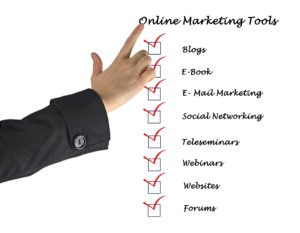How to write a blog

Blogging is a great way to position you as an expert in your field. It also helps you build an email list and a following – all are helpful as you endeavor to grow your organization’s profitability. Keep in mind that blogging is only part of your overall strategic marketing plan, and by the way, if you don’t have a strategic plan for your marketing, give us a call for a phone interview. In a short time we can help you get started on planning that will get you more business in the coming year.
The following recommendations will help you as you develop your blog and elevate your organization’s brand:
Before you start…
You should consider deadlines, frequency, the journey (content progression), and length of the blog
- Deadlines – when will you post your first blog?
- Set a reasonable deadline – your time is most likely going to dictate the time it takes to have your blogs ready for posting on your website or email and social marketing.
- Meet your deadline! If this is important to you then get it done, no excuses.
- Frequency – how many blogs will you post for 2018?
- I recommend you have a monthly blog, you can do more if you have the time but get at least three “in the can” before you begin posting so you aren’t under a time-crunch to get the additional blogs posted. You don’t want an irregular posting schedule.
- Journey – this is valuable in that it can build (and retain) followers. Where do you want to take your readers this year? What is most important to post first? What comes next? What do you want to accomplish in your reader’s education, entertainment, knowledge, and/or expertise?
- Length – you should keep your blog to a minimum of 500 to a maximum of 1,500 words. If your blog is too short, your topic or “central theme” is not developed well enough. If it’s too long, you can lose readers who want their information complete, but short and sweet. You may want to aim for about 1,000 words per blog.
The following is a recommended blog process that is proven to be successful for writers from a creative standpoint, and from readers who will stay engaged and want to follow you.
Pick your topic – (your Central Theme)
Start with an “introductory” blog. Tell your readers:
- Why you’re blogging
- Where you plan to take them (the journey) in this next calendar year
- How often they can expect a new blog via email
- How they will benefit from following (everyone wants to know what’s in it for them)
- Have a call to action – what do you want them to do? (Comment, subscribe, call, etc.)
- Tell them what the next blog is about (via title or a one-liner)
Create a working title
If you’re having trouble, write one sentence that describes the topic and the value you’ll provide. Keep in mind that through the blog development process, this headline may, and often will change due to a greater understanding of what you have developed for the reader. That said; crafting a working title keeps you focused on your topic and your purpose.
Develop 3 main points
Less than three isn’t enough, more than three can lose your readers. Take your central theme and determine how you will support it with your content. What are the three most important things you want your reader to know about this topic?
USE PHOTOS! You may only need one or two, no more than three. Then sketch out a rough draft that gives your readers the information they need to know.
Write an introduction

Writing the introduction after you’ve developed your three main points makes it easier to introduce your topic to the reader.
Keep in mind that you want to draw your reader in with this introduction so make it compelling by telling them how they will benefit. You’re talking to them, thinking of them, and you know where they’re coming from. It doesn’t have to be long or elaborate. Just tell your readers what’s ahead and how you’ll solve their problem or provide some answers.
Write a conclusion or call to action
Sum up your central them via your three main points, and tell your readers what to do next. Offer encouragement or tips on how to reach their goal. Or express hope that at least a few of your points struck a chord, resonated deeply, or seemed helpful.
Even a sentence or two about your own struggles can be great: “You know, I’ve been there. It’s frustrating, but when you master these steps like I have, you’ll be free of that problem forever.”
If the post is more about your personal experience, sum up what you’ve learned and how readers benefit.
Edit, revise, and proofread
This is the most important part of your post as it is a reflection on your company and its brand.
Check that you’ve given about equal attention to all your key points. Read out loud: Is it smooth? Lively? Be sure you’ve included all necessary steps or points and developed them sufficiently. Don’t forget to check grammar and punctuation.
When you’re done writing, proofread carefully for spelling, capitalization, list numbers, extra spaces, and missing or doubled-up words. Once you’ve proofed it, send it to someone in the company who can check it for spelling and grammar…you may be surprised that you still missed something.
Post it! –

Regarding blog layout; if you’re using WordPress, the website will do this for you. Use your byline and a small photo (headshot) of you, the author. Also if desired, write a short line or two of “about the author” that tells readers your qualifications and/or expertise.

The MarketTech Blog
Big Deal Marketing Group has been delivering measurable results since we rebranded our operations in 2013. Everything we do is about you and your organization’s growth. Our goal is to provide both a superior customer experience and tremendous value for our customers.
Subscribe to our blog…




